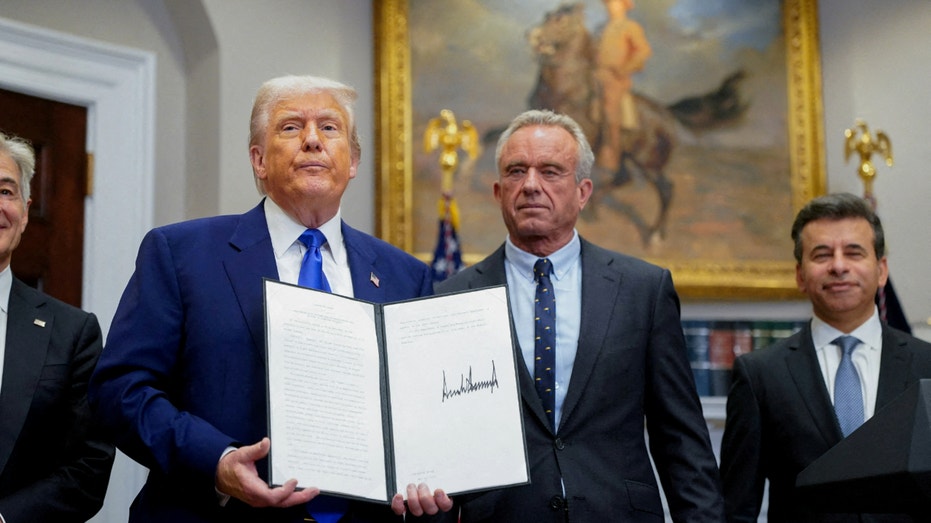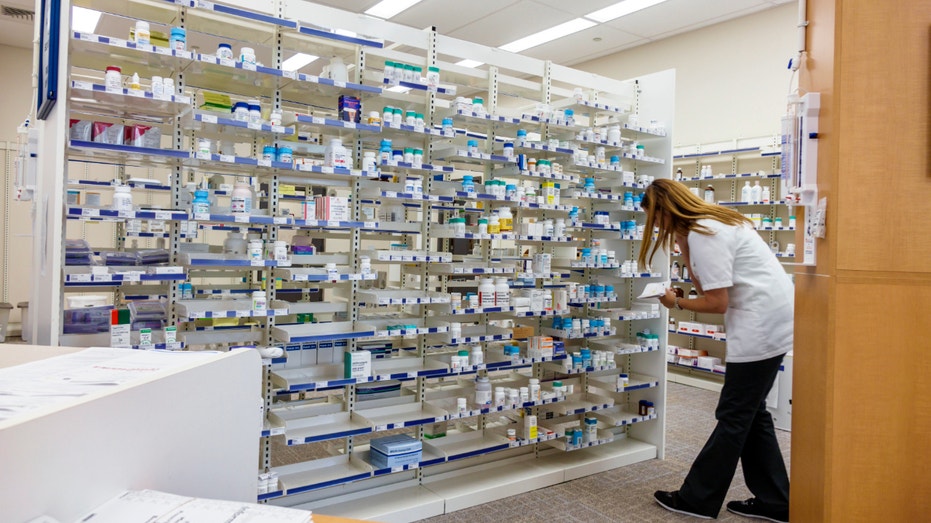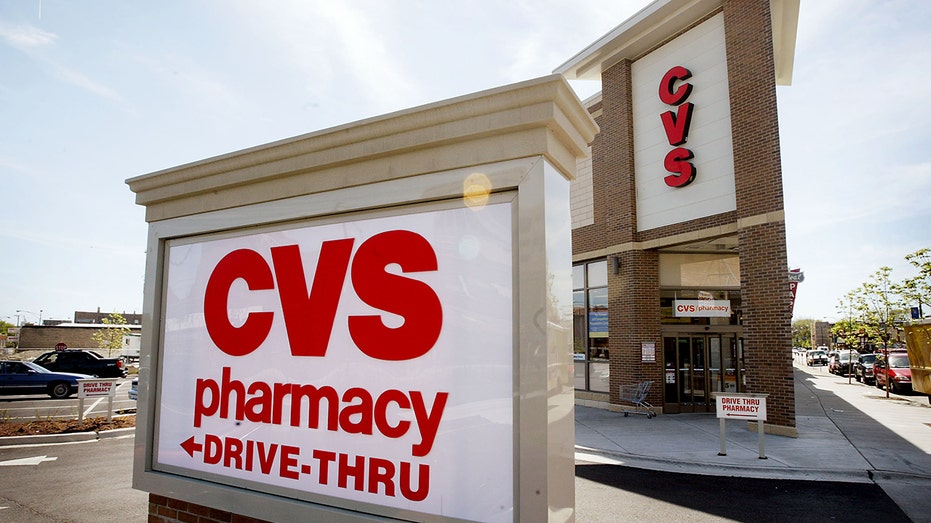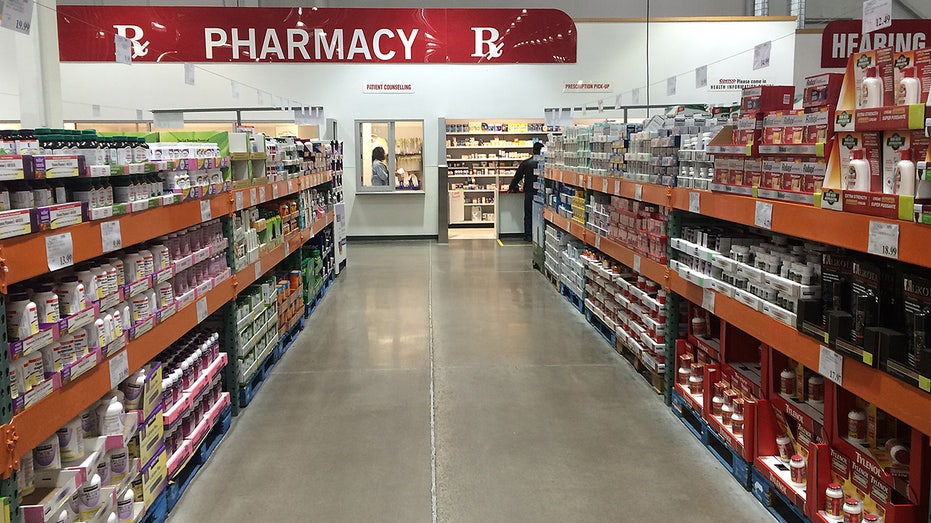President Trump announced this week that the administration is going to “totally cut out the middleman” in the pharmaceutical industry. (Credit: Reuters)
President Donald Trump announced this week that the administration is going to “totally cut out the middleman” in the pharmaceutical industry as it aims to lower the costs of prescription drugs for Americans.
Under the administration’s “most-favored nation” executive order, Trump said on Tuesday that the U.S. will begin paying the “lowest price there is in the world” for medications. The president said that part of his plan to cut costs includes getting rid of pharmacy benefit managers (PBMs), who are often described as “middlemen” because they act as the intermediary between drug manufacturers, insurers and pharmacies.
“We’re going to totally cut out the famous middleman. Nobody knows who they are… I’ve been hearing the term for 25 years,” Trump said during a Tuesday press conference at the White House. “We’re going to cut out the middleman and facilitate the direct sale of drugs at the most favored national price directly to the American citizen. So we’re cutting out the middleman. It’s so important.”

President Donald Trump, left, holds an executive order on prescription drug pricing next to Health and Human Services Secretary Robert F. Kennedy, Jr., during a press conference in the Roosevelt Room at the White House in Washington, D.C., on May 12, (Reuters/Nathan Howard / Reuters)
He did not disclose details about how he plans to cut out PBMs. However, some pharmaceutical giants are in agreement that their role needs to change, with Eli Lilly telling FOX Business that the only way to lower prices for U.S. consumers is if “intermediaries take less for themselves.”
TRUMP SAYS DRUG PRICES WILL BE CUT BY AS MUCH AS 90%: WHAT TO KNOW
“For Lilly, more than 60% of the cost of a medicine goes to middlemen. We look forward to working with the Administration to fix this broken system and bring lower prices directly to consumers,” the company said.
Independent pharmacists often claim that pharmacy benefit managers are to blame for their financial struggles as they reduce reimbursement rates for medications, making it difficult to cover operational costs.

An image of medication at a Walgreens pharmacy. (Jeffrey Greenberg/Universal Images Group via Getty Images / Getty Images)
However, the Pharmaceutical Care Management Association, the national trade association representing America’s PBMs, argued that “PBMs are the only ones whose mission is to lower prescription drug costs and the only check against drug companies’ unlimited pricing power, negotiating lower costs where competition exists.”
What are pharmacy benefit managers?
PBMs were developed in the 1960s and essentially act as negotiators between pharmacies, insurers and drug manufacturers within the prescription drug supply chain.
According to the Commonwealth Fund, PBMs negotiate with drug manufacturers and pharmacies to decide how much medicines cost, which drugs people can get and which pharmacies are part of their network.
TRUMP SIGNS EXECUTIVE ORDER AIMED AT BOOSTING US PRESCRIPTION DRUG MANUFACTURING
This means that they essentially decide how much insurers pay for medicines and how much pharmacies get paid. PBMs can also directly reimburse retail pharmacies on behalf of an insurer. Public and private insurers, including Medicaid, Medicare Advantage plans and employer-sponsored insurance plans, use these services,

A CVS Pharmacy in Chicago. (Scott Olson/Getty Images / Getty Images)
The PCMA said that “Americans are getting ripped off paying the highest prescription drug prices of any nation,” but that the U.S. needs to look at “every avenue” to lower drug prices.
“PCMA commends President Trump for rightfully recognizing the price is the problem. We encourage the administration to work with us to harness the power of PBMs’ work lowering costs as we all push to lower prescription drug prices for the American people,” the trade group told FOX Business.
GET FOX BUSINESS ON THE GO BY CLICKING HERE
On its website, CVS said CVS Caremark, one of the largest PBMs in the nation, “plays a critical role in the health care system by negotiating low net costs for our customers.”

Nonmembers may use Costco pharmacies, the retail giant says on its customer service website. (Toronto Star Archives/Toronto Star via Getty Images) / Getty Images)
According to the Commonwealth Fund, PBMs’ ability to negotiate manufacturer rebates and manage formularies to promote cost-effectiveness should theoretically help to control growth in drug prices and patient spending over time, but PBMs have financial incentives that may contribute to things such as pharmacy closures in rural areas as well as low-income neighborhoods, drug price growth and higher patient out-of-pocket costs, according to the Commonwealth Fund.
For example, a PBM might charge an insurer more for a drug than it actually pays the pharmacy for that same drug. This practice is called “spread pricing.” They also steer patients to use pharmacies they own and may pay smaller, independent pharmacies less for the same medications, according to the Commonwealth Fund.

